
Using Projection to Architecturally Integrate Cinematic Experiences in High-End Living Spaces
 As a Private Theatre Renaissance is upon us, delivering a reference level cinematic experience to clients is a top priority for custom integrators, and a primary focus for Barco Residential, leveraging our heritage in professional cinema and post-production to bring a new level of technology and performance to the industry.
As a Private Theatre Renaissance is upon us, delivering a reference level cinematic experience to clients is a top priority for custom integrators, and a primary focus for Barco Residential, leveraging our heritage in professional cinema and post-production to bring a new level of technology and performance to the industry.
Fully addressing this opportunity however requires more than delivering the ultimate image quality and creating the best possible projectors for the high-end residential market. We need to ensure we create experiences that not only suit the tastes and lifestyle of the client but can also be discretely integrated into the design and architecture of their home and living spaces.
A key element is that a great cinematic experience need not (or no longer) be limited to a traditional dedicated private theatre room, as the traditional “Dedicated Home Theatre” versus “Media Room” thinking is too limiting. In fact, the bulk of the opportunity before us may lie in living spaces where you wouldn’t expect a true cinematic experience to be possible, and where clients and their design partners are likely not aware that this level of experience is possible without building a more traditional dedicated private theatre.
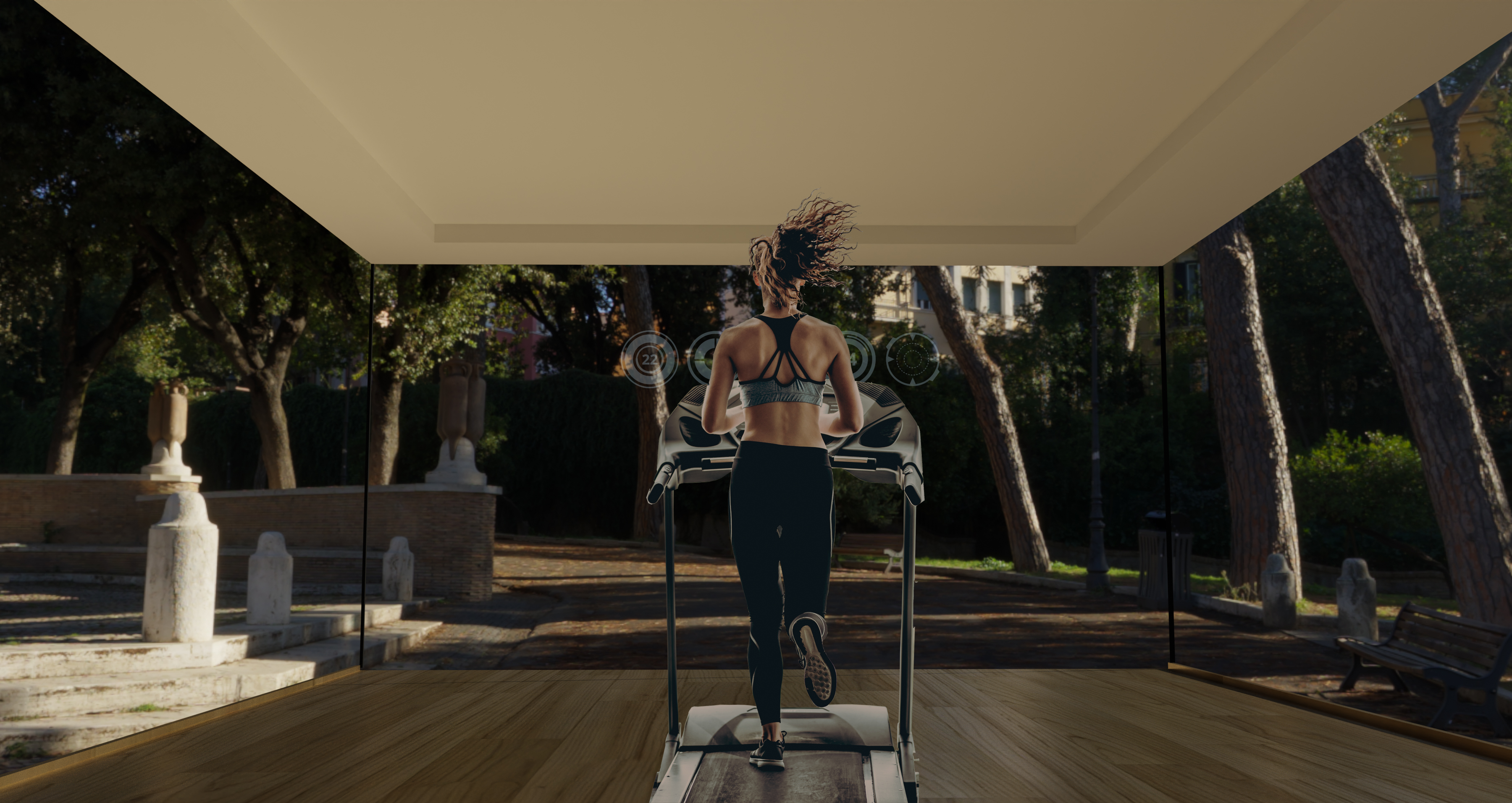 There are many of these spaces (attics, basements, …) in larger luxury homes, but it is especially true of luxury apartment or condo developments in places like London or New York, as no matter how high-end they are, space is still at a premium. These homes feature high-end design (often by famous architects and designers) as well as very high-end furnishings and appliances. Yet when you want to enjoy your favourite movie, TV series or even video game you tend to end up with a flat panel that in the best case is then “cleverly” concealed into a piece of furniture maybe with a strip of matching marble across the top to integrate with the decor. Even a 98” 4K flat panel TV however doesn’t give you a cinematic experience (as well as potentially leaving you with a monolithic black rectangle as a centre piece for your home…).
There are many of these spaces (attics, basements, …) in larger luxury homes, but it is especially true of luxury apartment or condo developments in places like London or New York, as no matter how high-end they are, space is still at a premium. These homes feature high-end design (often by famous architects and designers) as well as very high-end furnishings and appliances. Yet when you want to enjoy your favourite movie, TV series or even video game you tend to end up with a flat panel that in the best case is then “cleverly” concealed into a piece of furniture maybe with a strip of matching marble across the top to integrate with the decor. Even a 98” 4K flat panel TV however doesn’t give you a cinematic experience (as well as potentially leaving you with a monolithic black rectangle as a centre piece for your home…).
The design community however, seems to have come to assume that a cinematic experience is simply not possible in these types of environments and living spaces without making unacceptable design and esthetic compromises that make it impossible to maintain the elegance and sophistication of their chosen designs. Of course they can be forgiven for making these assumptions, as there are very real challenges in these spaces, such as high ambient light, not impeding design imperatives or interfering with design elements, as well as distances, shapes and angles within the space that don’t fit with the traditional idea of what is possible with projection.
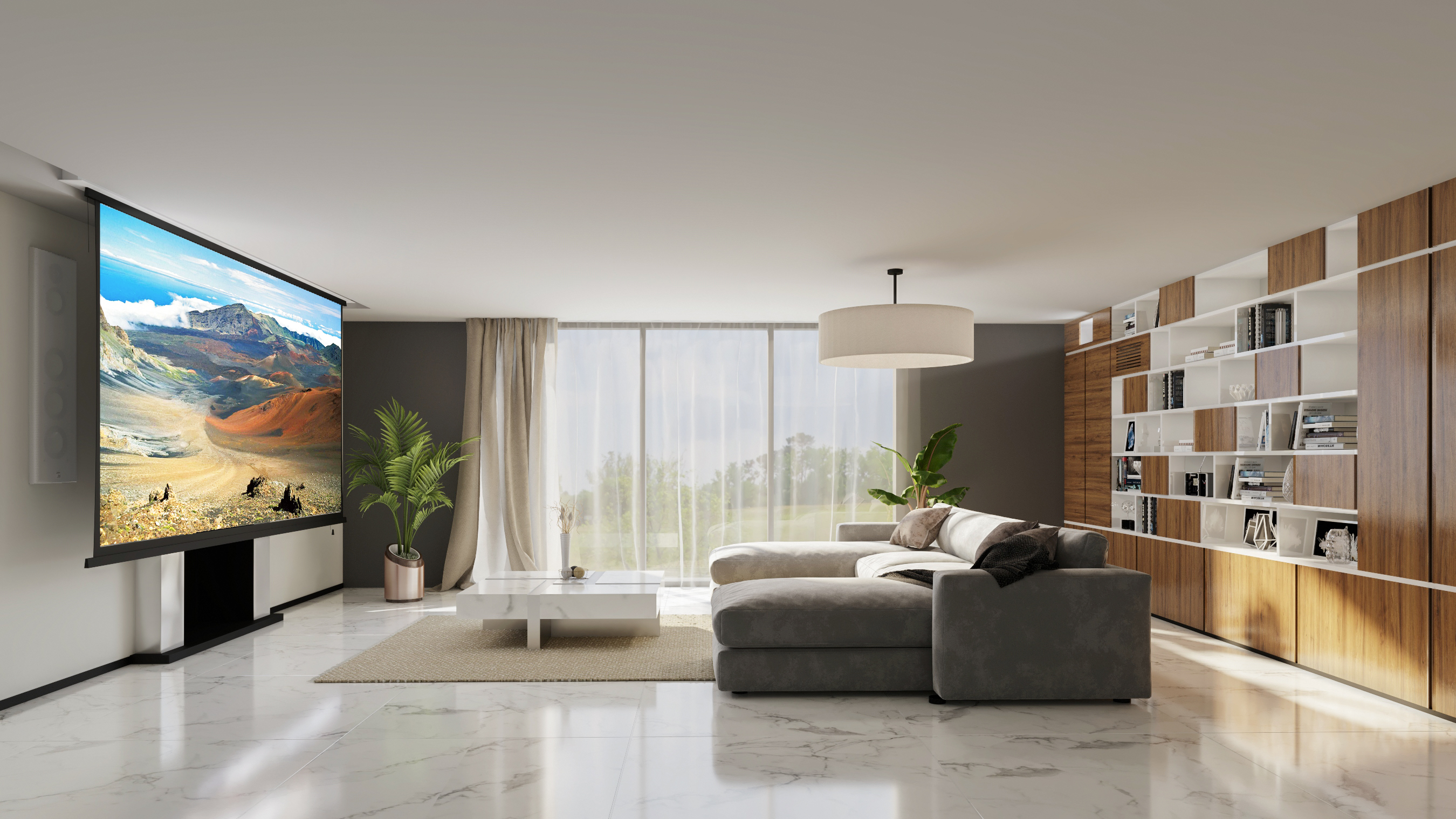 We however should not be forgiven if we do not educate and most importantly inspire our clients and the design and architectural communities on what is possible today with projection to create architecturally integrated digital canvases that enable a cinematic experience… An interesting exercise is to take a look at some of the wonderful walkthroughs of luxury real estate (Enes Yilmazer’s YouTube channel is a good start). When viewed from the above perspective, they almost become an anthology of missed, or rather unrealised opportunity!
We however should not be forgiven if we do not educate and most importantly inspire our clients and the design and architectural communities on what is possible today with projection to create architecturally integrated digital canvases that enable a cinematic experience… An interesting exercise is to take a look at some of the wonderful walkthroughs of luxury real estate (Enes Yilmazer’s YouTube channel is a good start). When viewed from the above perspective, they almost become an anthology of missed, or rather unrealised opportunity!
Key Architectural Integration Enablers
Because we believe the above is key to unlock the full potential of the market for our industry, creating technologies that make cinematic experiences possible while maintaining the integrity of the architectural design, even where space is at a premium, is as primordial a design focus for our products and technologies as delivering the best possible, most immersive image on screen.
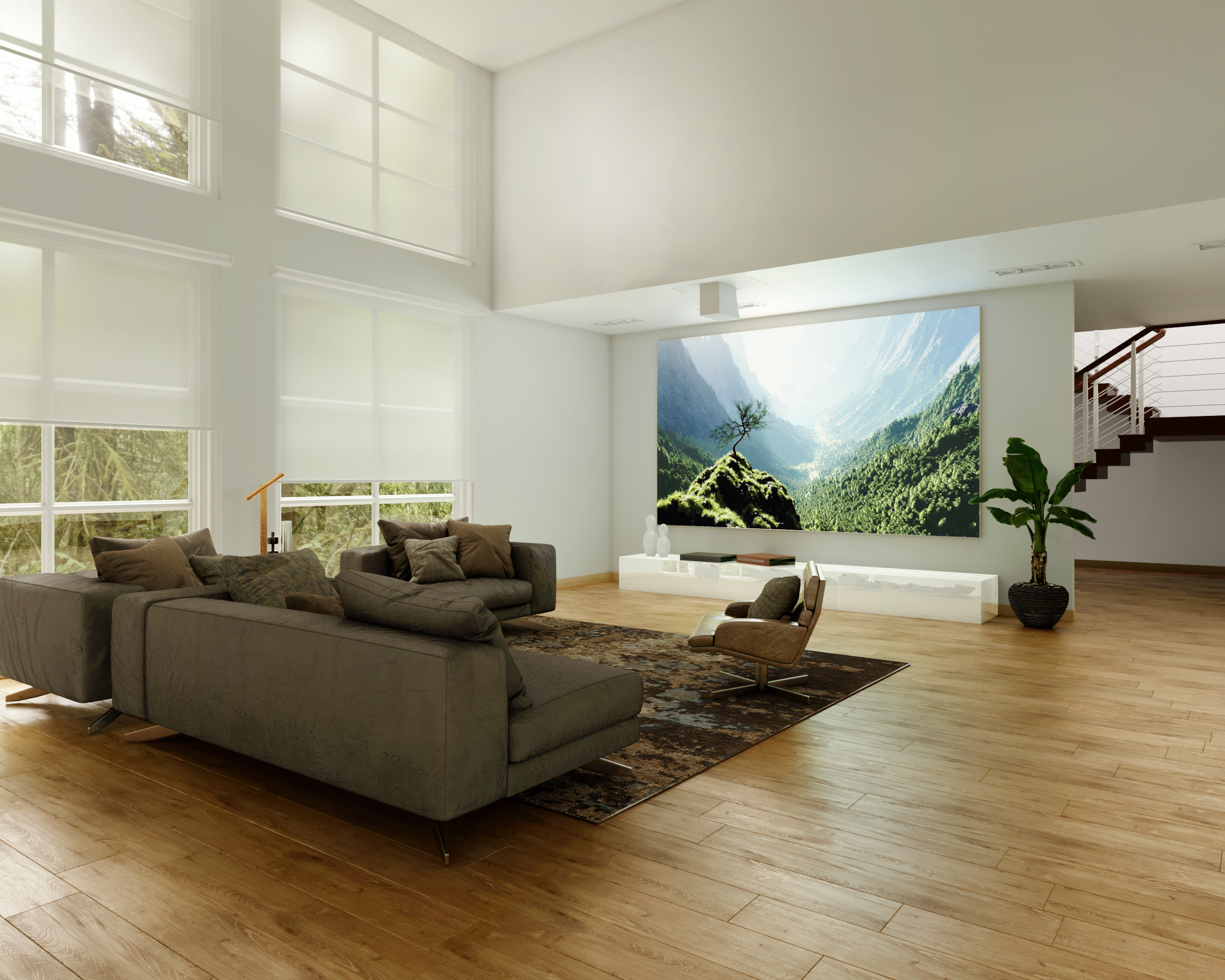 As we saw above, ambient light is one of the first challenges we encounter when creating a cinematic experience outside of a dedicated private theater. This is not simply a matter of creating a light cannon of a projector. Image quality is a complex puzzle, where maxing out brightness necessitates compromise on the other elements of image like contrast, colour performance, uniformity … This is unacceptable to delivering a reference level cinematic experience and means you need a projection platform that is capable of generating as much raw brightness as possible as a lot of that brightness will need to be sacrificed to maintain the best possible image quality. This is why most home theatre projectors on the market sit around the 2,000 lumens mark, while you can easily find a meeting room projector that delivers much higher lumens, but falls far short from the image quality we expect at reference level.
As we saw above, ambient light is one of the first challenges we encounter when creating a cinematic experience outside of a dedicated private theater. This is not simply a matter of creating a light cannon of a projector. Image quality is a complex puzzle, where maxing out brightness necessitates compromise on the other elements of image like contrast, colour performance, uniformity … This is unacceptable to delivering a reference level cinematic experience and means you need a projection platform that is capable of generating as much raw brightness as possible as a lot of that brightness will need to be sacrificed to maintain the best possible image quality. This is why most home theatre projectors on the market sit around the 2,000 lumens mark, while you can easily find a meeting room projector that delivers much higher lumens, but falls far short from the image quality we expect at reference level.
Thanks to our professional cinema and post-production heritage, our Barco Residential projector range has options that are capable of delivering unmatched brightness without compromise, enabling integrators to overcome most ambient light levels except perhaps direct sunlight on screen. In addition, the flexibility of our laser lightsources allow you to seamlessly adapt light output to maintain reference picture quality in all viewing conditions, day or night.
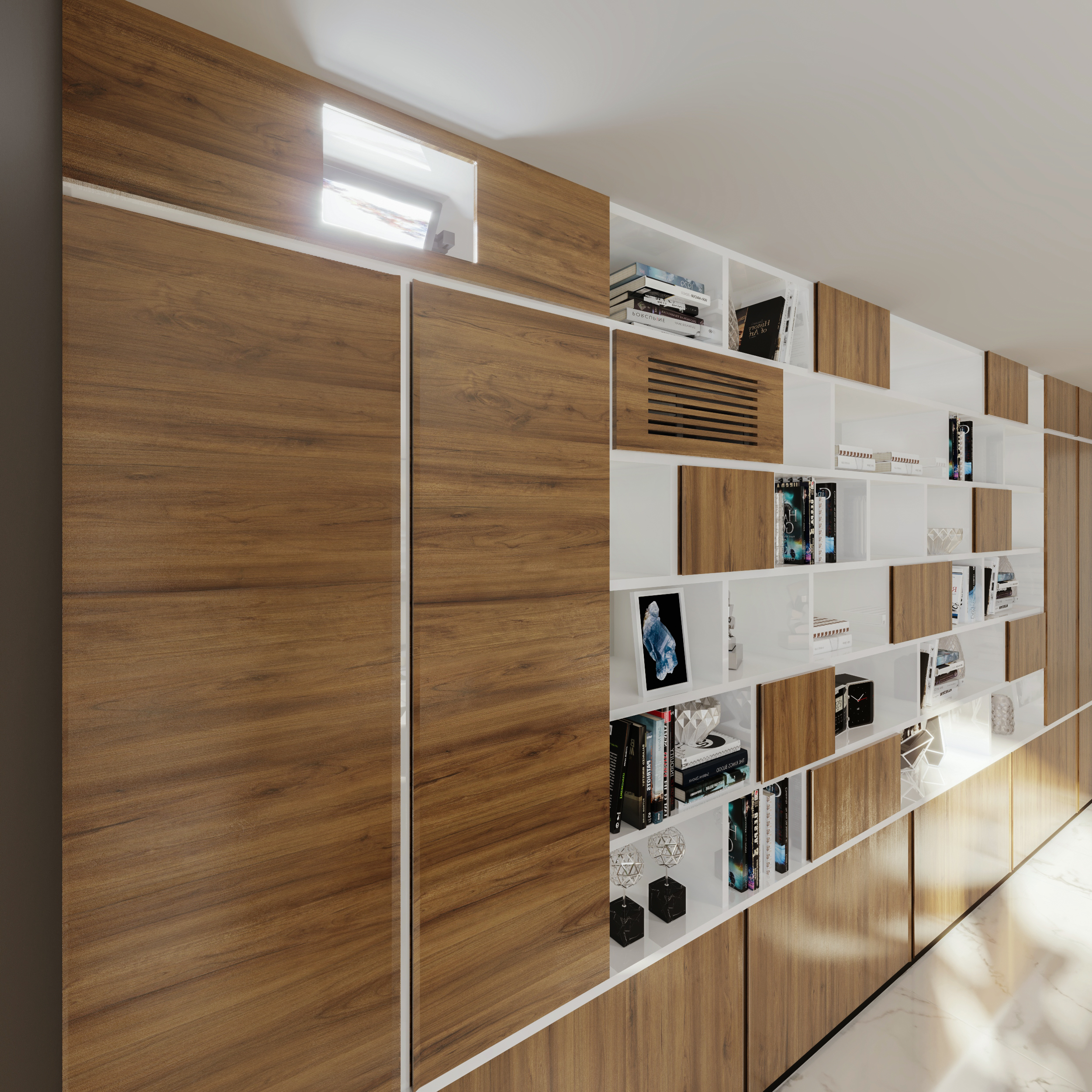 Most of the other challenges are related to projector placement and ability to hide the projector. Hide everything but the picture is a central idea behind every Barco Residential projector design. Features like liquid cooling systems, allow the projector to operate in any orientation. Combined with an unmatched choice of all-glass lens options, including Ultra Short Throw (even angled at 90 degrees…), wide lens shift and the built-in warping and blending engine this provides unmatched flexibility in terms of projector positioning and architectural integration in client’s homes.
Most of the other challenges are related to projector placement and ability to hide the projector. Hide everything but the picture is a central idea behind every Barco Residential projector design. Features like liquid cooling systems, allow the projector to operate in any orientation. Combined with an unmatched choice of all-glass lens options, including Ultra Short Throw (even angled at 90 degrees…), wide lens shift and the built-in warping and blending engine this provides unmatched flexibility in terms of projector positioning and architectural integration in client’s homes.
The powerful warping and blending engine in particular, which borrows technology developed in Barco’s professional Simulation labs, is unique in the residential space. It allows the integrator to use advanced Image Geometry Correction to deliver an image with perfect geometry on the screen even when the projector is outside of the offset range of adjustment. It utilizes the most advanced geometry distortion technology using proprietary bi-cubic interpolation, and is specifically optimised to preserve fine detail in the image and suppress resampling artefacts. No matter how complex your warp is, it is done in one single step and does not add extra latency to the signal. Our award-winning Pulse Projector User Interface makes this advanced technology almost drag-and-drop in terms of ease-of-use.
In practice these architectural integration enablers give integrators unprecedented options in terms of projector placement, making it possible to install the projector extreme off-axis, in the corner of the room, high in the ceiling, …This would normally create image artefacts like a keystoned image overshooting the screen. Using shift and warp we can easily return the image back to a perfectly aligned image without any artefacts.
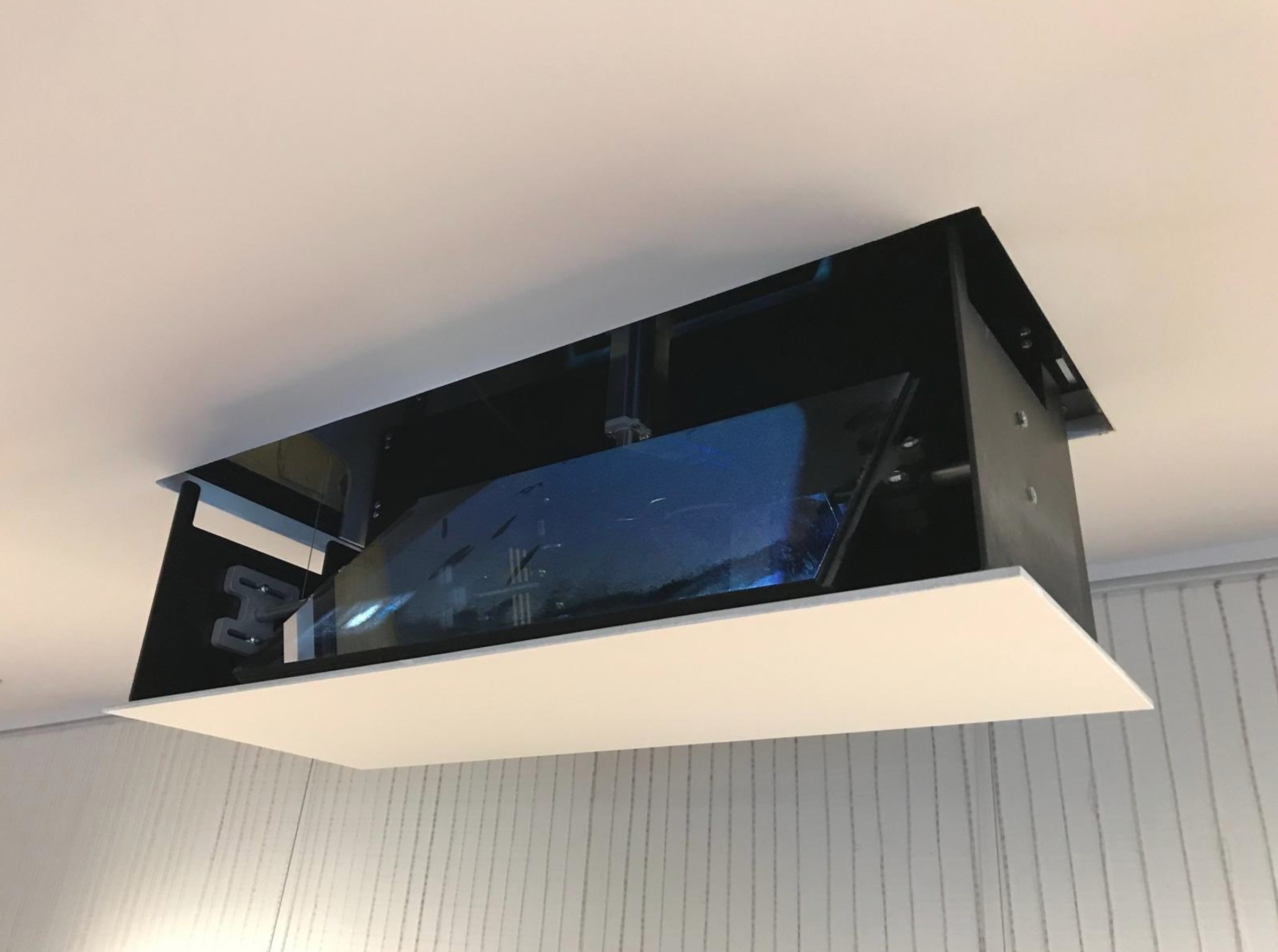 To then make the vanishing act complete, we have leveraged our partnerships with companies like Display Technologies to create options like motorized mirror drops that make it possible to hide the projector in-wall or in-ceiling, or even inside furniture.
To then make the vanishing act complete, we have leveraged our partnerships with companies like Display Technologies to create options like motorized mirror drops that make it possible to hide the projector in-wall or in-ceiling, or even inside furniture.
From a design and architectural perspective, these technologies and features all combine to allow unprecedented freedom in choice of living space and projector positioning, making it possible to truly hide everything but the picture even in the most challenging of spaces and design environments, where most people would never imagine a cinematic experience to be possible. Of course they are equally if not more powerful when creating experiences in New Media Art, Gaming and Wellness as well. These are exciting times for our industry!
Visit Barco Residential by clicking the link above or the icons to the right (or below if you’re on a mobile device).














